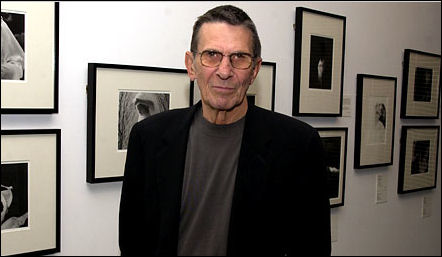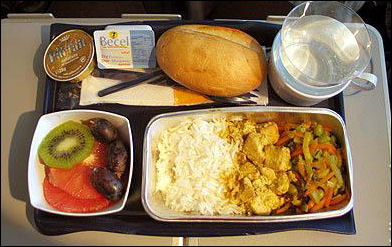A 12 year-old girl and her conservative grandparent custodians have filed a redstate-bluenose lawsuit over a substitute teacher showing Brokeback Mountain to a class of eighth-graders. My God…exposing 12 and 13 year-olds to a discreet dramatization of a tragic gay relationship? Not to mention saturating their heads with the perverse notion that life is short and we should all go for the gusto and the passion while we can? I’m thoroughly disgusted.
Edward Klein, an Oregon reader who sent me the link, says that “if true, the teacher was way out of line to show this film to this class, but the girl suffering ‘psychological distress’ seems extreme at best. Her grandparents are religious conservatives and have complained about inappropriate reading material, which makes my liberal antenna stand up.”
Day: May 14, 2007
Mailer and “Tough Guys”
“Tarantino before its time…long, florid dialogue punctuated by grotesque violence followed by more long, florid dialogue and then more grotesque violence.” — Telluride Film Festival honcho Tom Luddy describing Norman Mailer‘s Tough Guys Don’t Dance (’86). The quote is from a Mark Singer New Yorker piece about a Tough Guys Don’t Dance reunion that happened last year. (I was the in-house Cannon publicity press-kit writer at the time, and I got to interview Mailer at some length while working on the notes for the film. I was always pleased that fate allowed this to happen.)
Bloom in a lull
“It is the first time in eight years that I haven’t got an acting job which I am immediately going in to,” Orlando Bloom tells The Scotsman‘s Garth Pearce. “I celebrated my 30th birthday in January and it feels different. It is less urgent. It is now time for reflection and to ask myself: ‘How much living do you want to do?’ As much as working has been my life, there is now a shift in my priorities.”

In other words, Bloom is in a career lull. Things haven’t been happening for the guy since the Big Tumble-Down of ’05 when Kingdom of Heaven, in which Bloom had the lead role, bombed (despite the director’s cut of that Ridley Scott film being a near-masterpiece), and then Elizabethtown, which Bloom also carried on his shoulders, turned into the biggest high-expectation wipeouts of all time. In essence, the industry jury was deliberating two years ago whether Bloom was in fact a leading man, and now they’re really deliberating this.
Subway video
I’ve taken video-editing tutorials from four different people (one in L.A., three in NYC), and at least some of it is seeping in. I’ve been a little hesitant about posting video, but I think the key to getting past that is just admitting that some of the early MPEG4 files are going to be borderline inane. No, wrong description…how about underwhelmingly austere? I took this today not with the video camera that I’ll be using in Cannes but with the Canon A540, my no-big-deal digital photo camera that has a video option.
Coppola’s Coda of Mildness
If you liked Hearts of Darkness, Fax Bahr and George Hickenlooper‘s renowned 1991 documentary about the arduous making of Francis Coppola‘s Apocalypse Now, you may also have a place in your head for Coda: Thirty Years Later, an informal sequel to Hearts of Darkness that is “partially” about Coppola filming Youth Without Youth in Romania two years ago.
Peter Nellhaus‘s Green Cine Daily report on the doc, which Nellhaus saw Sunday night at Miami’s Colony theatre, has a lot of good reporting, including a remark that “much of the footage shown from Youth Without Youth is bathed in golden browns” and another that “visually, [Coppola’s] new film will remind some of the first two Godfather films.”
“The prime difference between Hearts of Darkness and Coda,” Nellhaus observes, “is that Apocalypse Now was filmed in desperate circumstances, while Coppola’s profitable wine business now allows for him to return to filmmaking on his own terms.”
In other words, the newer doc is going to be less interesting because it’s about filmmaking with a certain comfort factor, which means it obviously won’t have the grueling real-life drama that made Hearts of Darkness such a fascinating ride. Pressure and desperate circumstances are obviously difficult things to live through, but they pay off like a slot machine when they’re part of a documentary.
AmPav panels
It’s a tough job lining up discussion panels at the American Pavillion during the Cannes Film Festival, since talent usually only flies into Cannes for brief 24-hour periods (the barrage of invasive paparazzi attention is soul-deflating) and their publicists are always first and foremost hooking them up with major media outlets, with AmPav panels often regarded as a low priority. Roger Durling, director of the Santa Barbara Film Festival, has nontheless rounded up My Blueberry Nights director Wong Kar Wai, Sicko director Michael Moore, Mister Lonely director Harmony Korine and New Line honchos Robert Shaye and Michael Lynne to talk about New Line’s 40th anniversary.
Telluride and “Youth”?
Pete Hammond doesn’t think that recent announcement about Francis Coppola‘s Youth Without Youth having its world premiere at the RomaCinemaFest in late October necessarily means that it won’t show up at Telluride Film Festival a month and a half earlier. “Telluride doesn’t advertise its films in advance and gets movies all the time before their official ‘world premieres’ at Toronto or other places because of that reason,” he reminded me yesterday. “To call something a ‘world premiere’ means nothing to Telluride, which just wants to show good movies. Brokeback Mountain premiered at both Venice and Telluride at the exact same hour a couple of years ago even though Venice had it billed as a world premiere.”
Ordinary people vs. classics
There’s an interesting idea for a series of N.Y. Times articles suggested by Michael Wilson‘s 5.13.07 piece about a New York cop in his 60s watching Jules Dassin‘s The Naked City for the first time. Sit down and watch a classic film with an average, not-terribly-sophisticated person and report his/her reactions. I sincerely love this idea, which would basically deliver downmarket versions of those articles from three or four years ago in which big-name directors watched their favorite films (i.e., Woody Allen getting all sentimental over Shane). Think of it — Shawna Castro of Livingston responds to F.W. Murnau‘s Sunrise, Fred Collard of Mobile considers Michelangelo Antonioni‘s L’Avventura, and so on. Are classic films only for the ivory-tower elites or do they have the power to affect Average Joes?
Nimoy’s chubby-chasing
“The average American woman, according to articles I’ve read, weighs 25 percent more than the models who are showing the clothes they are being sold,” Leonard Nimoy has told N.Y. Times writer Abby Ellin for a profile of him and his photographs of obese women. “So, most women will not be able to look like those models. But they’re being presented with clothes, cosmetics, surgery, diet pills, diet programs, therapy, with the idea that they can aspire to look like those people.

“It’s a big, big industry,” Nimoy goes on. “Billions of dollars. And the cruelest part of it is that these women are being told, ‘You don’t look right.’ ”
We all know that high-fashion garments are specifically designed to be worn by women with almost laughably boney frames. And most of us agree that women with skeletal bods are not all that attractive, for the most part. Most guys like a little heft, a little womanliness to hold onto.
But I’d like to stand with Nimoy inside a Walmart in Emporia, Kansas, or stroll with him through a midwestern airport, and I’d like him to point to all those Jabba-sized women who would collapse from exhaustion if they had to walk a mile through the woods and explain to me how they look “right.” Morbid obesity has never been and never will be an exuder of natural God-like radiance. It’s an affliction and a life- shortener and a metaphor for decline-of-the-American-empire sloth. Let’s hear it for family-size buckets of Kentucky Fried Chicken around the dinner table and bowls of Ben and Jerry’s cookie-dough ice cream on the coffee table while watching Desperate Housewives (which I, in my New York dementia, actually watched last night).
Nimoy is an elegant chubby chaser using his upscale Dr. Spock/Man Ray credentials to achieve certain goals.
Time to leave
The Cannes trip (JFK to Munich, Munich to Nice) begins at 8 pm eastern this evening. It will conclude around 12:15 pm Tuesday in Nice, which is 6:15 ayem in Manhattan and 3:15 ayem (close to the hour of the wolf, when the demons and the nightmares come out) in Los Angeles. I probably won’t post anything until three or four hours after that.

It’s ironic and almost sad to think of all those thousands of insomniac Los Angelenos tossing and turning at that hour, thinking about how scary and theatening everything is and listening to that far-away, deep-down howl in their souls, while their counterparts in Nice will be trudging along an airport tramway and rubbing the sleep out of their eyes and soon to be outdoors and curbside and staring up at the bright blue sky and breathing in that almost fragrant, vaguely salty Mediterranean air.
